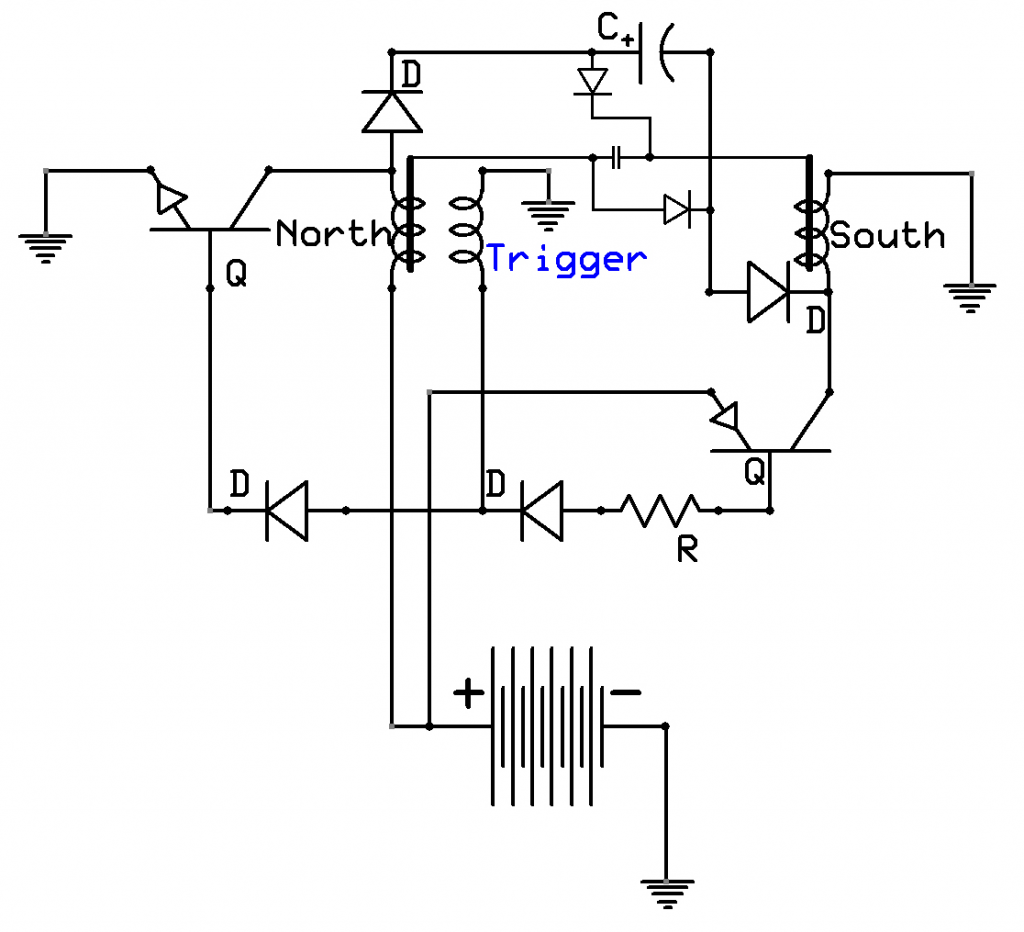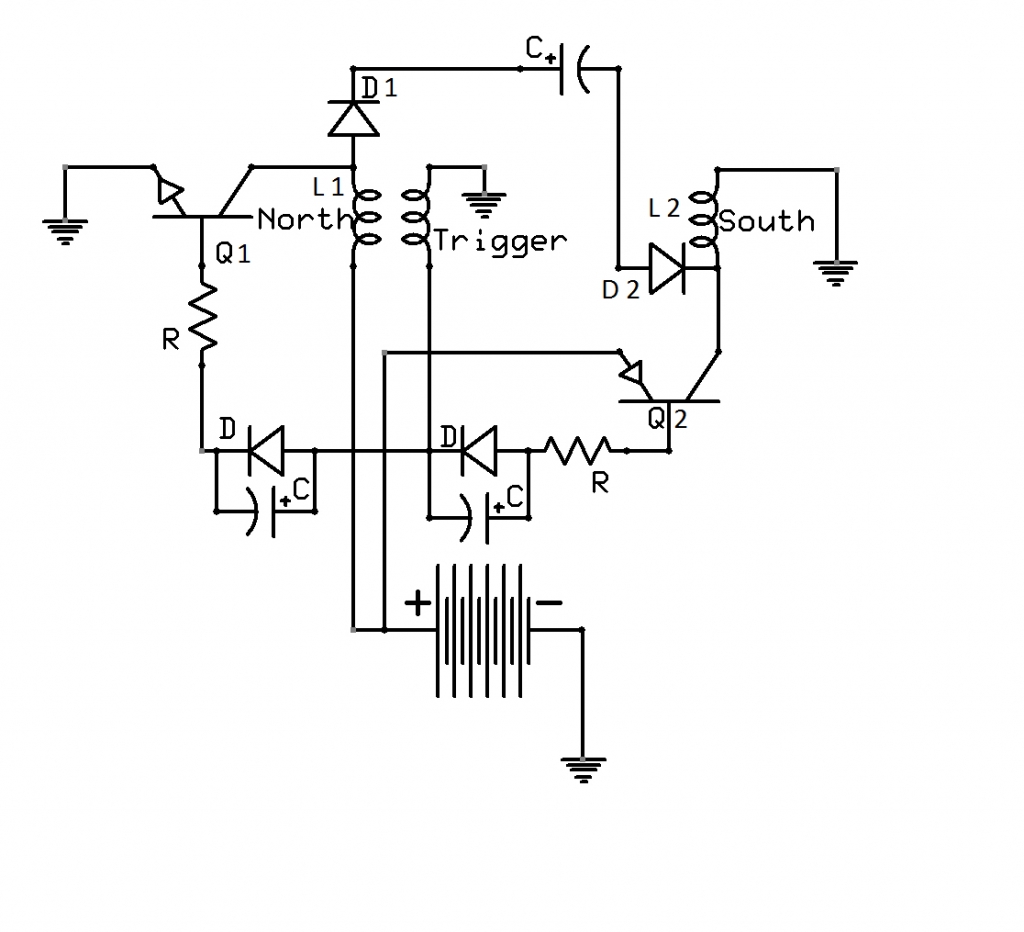Look at Mikes cap dump circuit

The bemf from the coils are pumping massive pos energy into the cap and battery but nothing on the neg side.
When all that pos energy hits the cap it creates a neg deficit on the other side of the cap, the battery has to fill this deficit.
Our circuits need to collect bipolar, pos and neg.

The bemf from the coils are pumping massive pos energy into the cap and battery but nothing on the neg side.
When all that pos energy hits the cap it creates a neg deficit on the other side of the cap, the battery has to fill this deficit.
Our circuits need to collect bipolar, pos and neg.
 I think this must be right.
I think this must be right. )
)


Comment